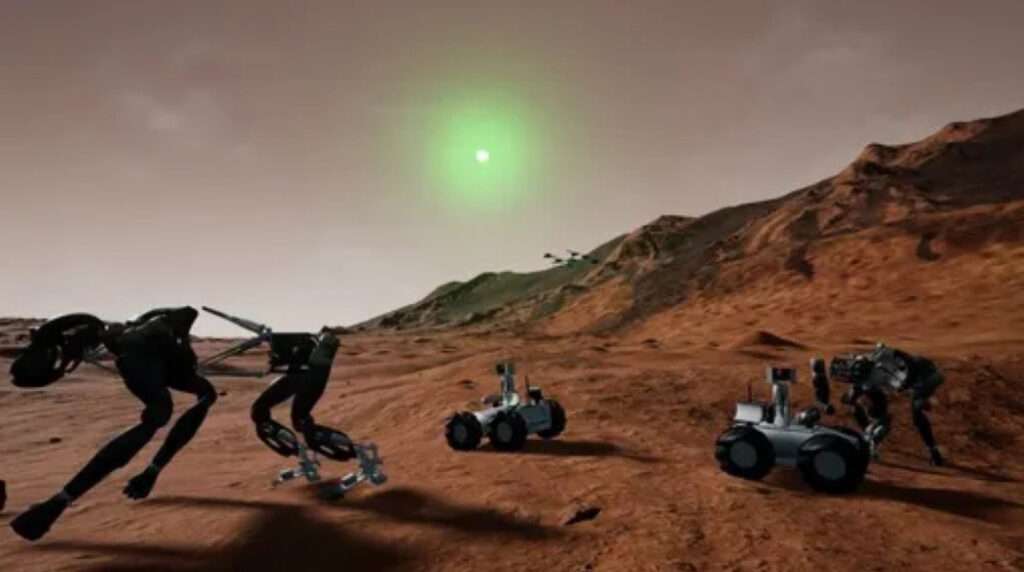A swarm of robotic dogs, wheeled vehicles and flying drones are planned to be the next to start exploring Mars after the success of the NASA Mars Rover project.

There have so far been six successful robotically operated Mars Rovers capable of moving over the terrain to gather data, which is then sent back to scientists on Earth, and judging by the German Space Agency’s mock-ups, robot dogs could soon be on the Red Planet too.
Of these, the Perseverance rover, which landed in 2021 and carries the Mars helicopter Ingenuity is still operating, and the successful teamwork has inspired the new project currently being developed by the German Space Agency to create a robotic team to operate on the Red Planet.
The team believes that the example of the Mars Rover Perseverance confirms that exploration can best be achieved when robots with different capabilities work together – ideally autonomously – and as a result, they conceived the VaMEx-3 project.
In a statement, the University of Bremen, which is one of those working on the project, said: “The surface of Mars poses a challenge for scientists: the most interesting discoveries are expected to be in the places that are hardest to access due to the rocky and jagged terrain.
“To be able to examine them, robots with different capabilities must cooperate with each other: moving on the ground, in the air, and climbing too. The transport of payloads and the energy supply must also be secured.
“The VaMEx-3 project, funded by the German Space Agency at DLR with funds from the German Federal Ministry for Economic Affairs and Climate Action (BMWK), facilitates the cooperation between different robot systems that are intended to one day land on Mars.”
They said that the VaMEx-3 project consists of four parallel subprojects with partners from all over Germany and has a total funding volume of around EUR 5 million (GBP 4.4 million).

The scientists said that up until now they have managed to get the individual robotic units to operate successfully alone in a virtual simulation of the surface of Mars, but now they were attempting to get them to work together.
Project coordinator Dr Rene Weller said: “Now it’s all about bringing them together in a collaborative way.”
Another challenge is creating robotic systems that can tackle the difficult environment on Mars, where temperatures can drop to minus 140 degrees Celsius (minus 220 degrees Fahrenheit) in the wintertime in the polar region and increase to 21 degrees Celsius (70 degrees Fahrenheit) at the lower altitudes.
There is also little atmospheric pressure meaning a constant bombardment of cosmic rays, and an atmosphere that is almost all carbon dioxide.
Dr Joachim Clemens, who is coordinating the subproject, said: “One challenge is that – to a certain extent – the environment is unknown in advance.
“That’s why the swarm members have to identify obstacles themselves, create a map of their surroundings, and estimate their position on the map. And in doing that, the units cooperate with each other: map and positioning information is exchanged so that all units can benefit from it. The swarm participants then use this information to plan and coordinate their next steps.”

The long-term goal of the VaMEx mission is to explore the Valles Marineris canyon system on Mars to find evidence of water resources and biological traces from eras on Mars that were more climatically conducive to hosting life.
The Mariner Valleys, named after one of NASA’s first Mars space probes, form the largest canyon network in the solar system, stretching 4,000 kilometres (2,485 miles) and reaching depths of 10,000 metres (32,800 feet) in places.



